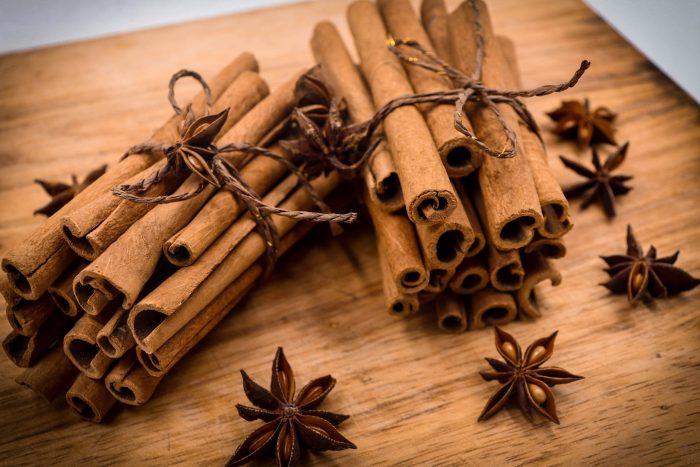Oriental medicine considers cassia one of the four precious medicinal herbs: ginseng, velvet, cassia, and extra herbs. In the past, Western medicine was only interested in cassia oil and used cassia as flavoring. Recently, it has been discovered in cassia powder that has a hypoglycemic effect, which is an empirical evidence of oriental medicine using cassia to treat thirst.
Vietnam is one of the countries growing many cassia, annually exporting hundreds of tons of cassia bark and tens of tons of cassia essential oil. In feudal times, the best cassia was in Thanh Hoa, dedicated to advancing the king and tribute to the Chinese dynasties.
The quality of cassia depends on several factors:
Locally the tree grows: Trinh Van commune, Thuong Xuan district, (Thanh Hoa), Quy Chau, (Nghe An) and Tra My (Quang Nam).
Cassia species: C.loureirii Nees then C. Zeylanicum Nees.
Tree age when harvested: Over 15 years is good cassia, over 30 years is special.
Bark on tree: The bark from 1.2m to the first branch is best, the east direction is special. 20cm to 1.2 m from the ground (less than Thuong Chau). The bark of big branches is called Thuong Thuong cassia; Small branch bark called cassia chi.
Shell thickness: Cassia bark (stem bark, bark of large branches). There are 4 types, of which the special type: thicker than 6mm, sometimes up to 10mm, there are 2 layers of oil called dielectric divergent, dark brown, over 2mm thick.
The age of the tree is 8-30 years (C. Cassia Nees et Bl). The results showed that: 30-year trees had the highest percentage of essential oils. The age of the most economically harvested tree for C. Cassia Nees et Bl is 14 years. The rate of essential oils in the bark of twigs reaches 99% compared with 30 years. Leaf oil reaches 71% (calculated by dry ingredients).
Cinnamon is one of the spices with thousands of years of age, deserving of a functional food that needs to be seriously inherited, in oriental traditional medicine, cassia is used in medicine and food. colds, bloating, nausea, diarrhea, and menstrual cramps. The effect of energizing and revitalizing also makes cassia famous. Cassia also works to improve blood circulation and warm the body. And recently, cassia is used as a tobacco cessation aid and with some other spices such as ginger, turmeric, basil, chamomile, lemon fruit, etc.
Here, using cassia as a spice, so only need to know the medicinal properties of cassia in Oriental medicine. Cassia is the bark of small branches of cassia in general. cassia is warm, spicy, sweet, and non-toxic. cassia helps to clear the vessels, warm the body, eliminate external gases, treat colds, sweating, headaches, body aches, and pain in the joints, tendons.
Cassia is suitable for jujube, licorice, enhances resistance, and regulates the exchange of fatty patches to protect the body and internal organs. Cassia is suitable with dahlia, licorice decoction, nourishing new services, dissolving toxic gas, toxic wind. Cassia is suitable with dahlia root, licorice, jujube, ginger, excellent drink, cure headache, hot sweating, fear of wind. Creates a unique pleasant taste for dishes.
Cassia has a sweet, spicy flavor and characteristic aroma and is a good source of minerals such as potassium, calcium, iron, manganese, zinc and magnesium. It contains high amounts of vitamin A, niacin, pantothenic acid and pyridoxine. Cassia also contains fiber and antioxidants. Cassia is one of the spices dating back to thousands of years and is widely used in traditional medicine.
Reducing bad cholesterol: Studies show that just adding half a teaspoon of cinnamon powder can help lower bad cholesterol and support heart health.
Anticoagulant effect.
Reducing inflammation: With a teaspoon of cassia powder a day, it can help reduce arthritis, pain and swelling.
Aids in digestion: Cassia helps with indigestion, flatulence, and nausea. The high fiber content in cassia can help people with irritable bowel syndrome.
Warm up: In winter, when adding cassia to your diet helps you increase your body temperature to fight the cold of the weather.
Increase memory: cassia helps increase memory and cognitive ability of the brain.
Relief of joint pain: Drinking a solution of 1/2 teaspoon cassia mixed with 1 teaspoon of honey in the morning can cut joint pain as soon as a week. Strain bacteria growth: American scientists at Kansas State University affirmed that cassia has the effect of killing E.coli bacteria, Initial laboratory studies and animal studies showed that cassia can exert anti-microbial and anti-fungal effects. Cassia mixed into food will inhibit the growth of bacteria and the rate of rancidity of the product, and act as a natural, non-toxic preservative. Acne treatment: Oil and cinnamon bark are powerful anti-acne compounds. They work to remove blisters, lighten the skin, prevent acne from spreading.
Regulates blood sugar levels, the property is especially significant for people with diabetes. One of the first studies on this topic was published in 2003 in the medical journal “Daibetes Care” with the participation of 60 people with type 2 diabetes. compression (the equivalent of 1/4 teaspoon) gave fairly consistent results. Support Against Cancer: May prevent colon cancer risk. According to research results announced by the US Department of Agriculture, Maryland, cassia can reduce the spread of cancer cells.
Help to quit smoking: Whenever smoking cravings, take a piece of cassia and chew it directly or drink cassia tea to reduce cravings.
Taboo: Pregnant women and people with heat should not use cassia. When using cassia, you must abstain from onions, or use cassia onions.
Note: Unless directed and supervised by a physician, those taking antidiabetic drugs, or brand-name drugs that act on blood glucose, or insulin levels, should not apply cassian in the prescribed dose. Treatment.

